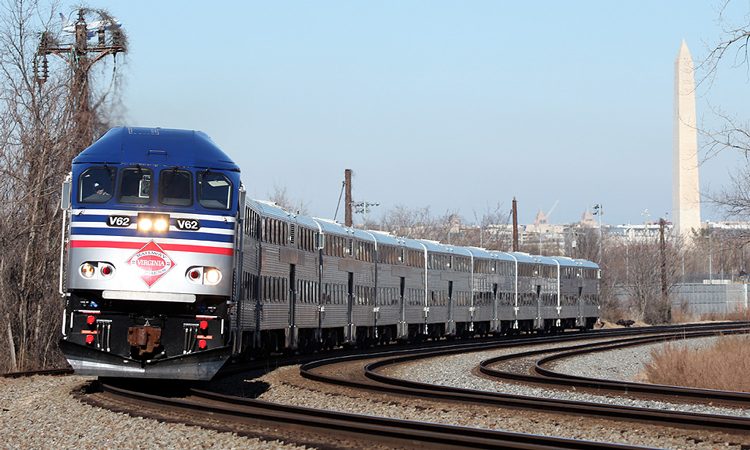FRA publishes railroads’ Positive Train Control implementation progress
Posted: 18 May 2020 | Global Railway Review | No comments yet
An update report from the U.S. Department of Transportation Federal Railroad Administration (FRA) has shown that Positive Train Control (PTC) systems are in operation on 98 per cent of all 58,000 PTC-mandated route miles.


The U.S. Department of Transportation Federal Railroad Administration (FRA) has released a quarterly status update on railroads’ self-reported progress, as of 31 March 2020, toward fully implementing PTC systems by 31 December 2020, as required by Congress.
PTC is a system of functional requirements for monitoring and controlling train movements and is a type of train protection system.
Based on railroads’ First Quarter 2020 PTC Progress Reports and current PTC Implementation Plans, nearly all railroads subject to the statutory mandate are operating their systems in revenue service or in advanced field testing, known as revenue service demonstration (RSD), with PTC technology remaining to be activated on only approximately 1,100 required route miles.
FRA Administrator, Ronald L. Batory, said: “We continue to work directly with all ‘to be complaint’ railroads – providing technical support and guidance as requested – to enable them to satisfactorily meet the Congressional deadline. I’m pleased with the growing number of railroads that have reached critical milestones, and continue to encourage all of them to help each other overcome any remaining challenges from their respective lessons learned.”
As of 31 March 2020, PTC systems were in RSD or in operation on 56,541 route miles – 98 per cent of the nearly 58,000 route miles subject to the mandate. Specifically, at the end of the first quarter of 2020, PTC systems were governing operations on all PTC-mandated main lines owned or controlled by Class I freight railroads and other freight host railroads subject to the mandate.
While most commuter railroads’ PTC systems are in RSD on their entire mandated networks, work remains as 63.2 per cent of all commuter railroads’ cumulative required route miles were PTC-governed as of 31 March 2020, an 8.5 per cent increase since last quarter. In addition, interoperability has reportedly been achieved in 48.5 per cent of the 229 applicable, host-tenant railroad relationships as of 31 March 2020, a 10 per cent increase since the fourth quarter of 2019.
Recognising that 33 weeks remain until the final implementation deadline set forth by Congress, FRA continues to direct additional staff resources to railroads at risk of not fully implementing an FRA-certified and interoperable PTC system on their required main lines by 31 December 2020. To evaluate the risk of noncompliance, FRA is primarily considering the following factors:
- The percentage of mandated route miles currently governed by a PTC system, including RSD
- Any unresolved technical issue in implementing a compliant PTC system
- The percentage of a host railroad’s tenant railroads that have achieved required interoperability
- A host railroad’s expected date to submit its PTC Safety Plan to FRA, necessary to obtain PTC System Certification.
Based on railroads’ self-reported progress on these factors as of 31 March 2020, FRA currently considers the following four host railroads at risk of not fully implementing a PTC system on all required main lines by 31 December 2020: New Jersey Transit; TEXRail; Northeast Illinois Regional Commuter Railroad Corporation (Metra); and New Mexico Rail Runner Express (Rio Metro).
Ronald continued: “We strongly urge the collaborating railroads to work in a safe, focused and aggressive manner to meet this end-of-year deadline. The FRA has provided nearly $2.6 billion in grants and loans and thousands of hours of technical assistance to help railroads fully implement PTC systems.”
The FRA remains fully committed to facilitating railroad efforts to complete all remaining work. In addition, FRA is encouraging state departments of transportation and governors to help any at-risk commuter railroad within their states to ensure they have enough technical resources and support to meet the end-of-year deadline.
Related topics
Related organisations
Federal Railroad Administration (FRA), U.S. Department of Transportation (USDOT)








